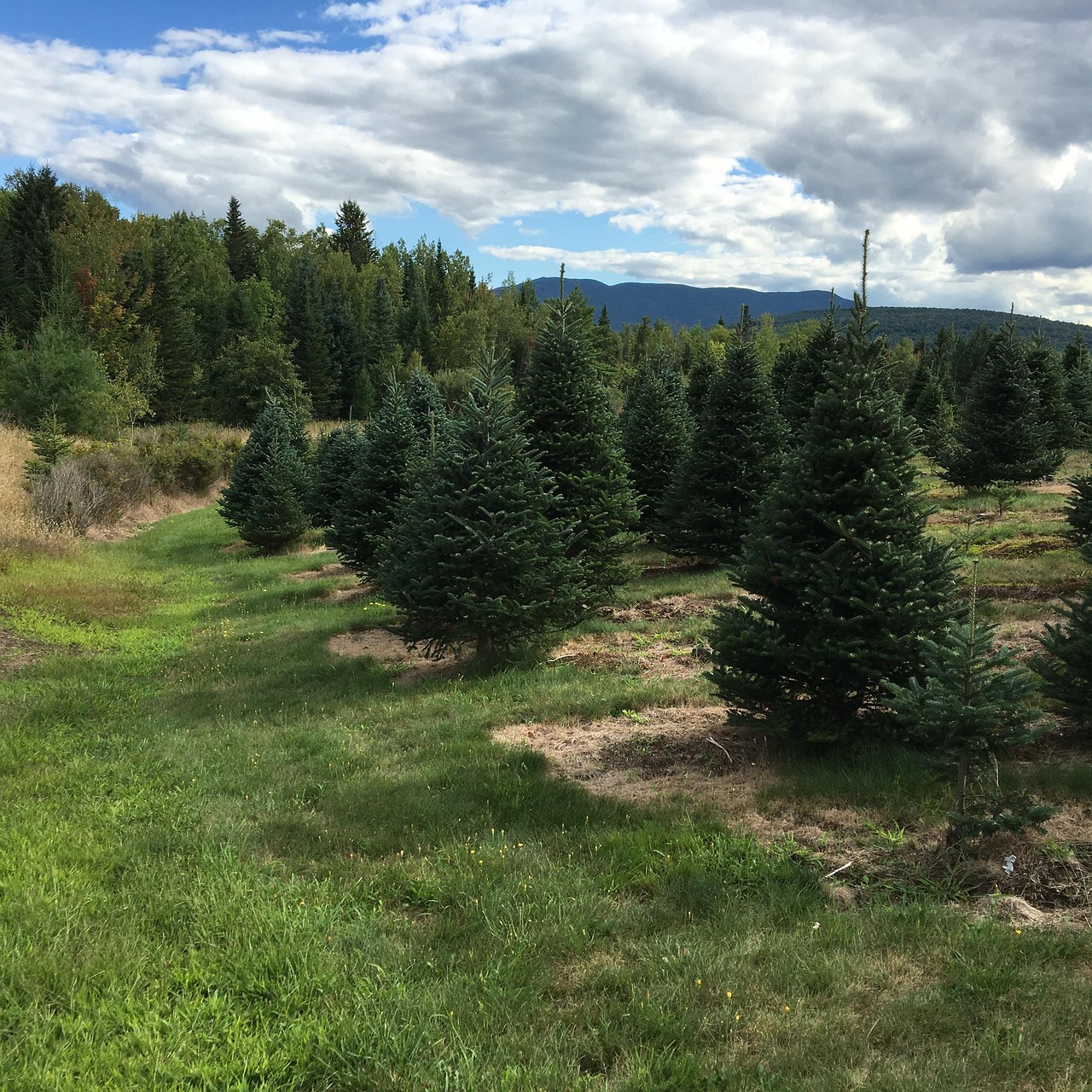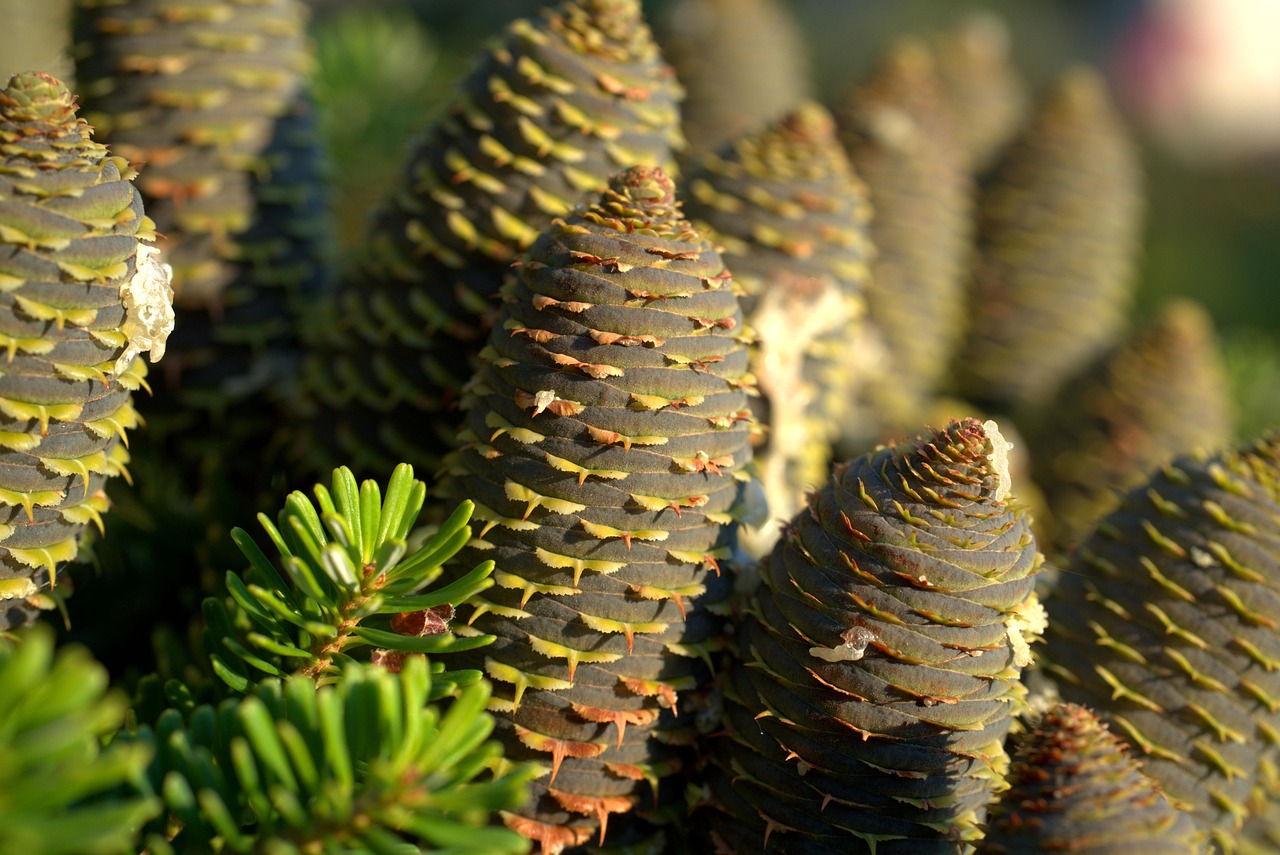Balsam fir trees do shed their needles, but not frequently. They typically lose their older needles in the fall and winter months. This natural process is part of their growth cycle and allows them to maintain healthy foliage.
Balsam fir (Abies balsamea) is a popular evergreen tree native to North America. Known for its fragrant aroma and attractive appearance, it is commonly used as a Christmas tree and ornamental plant. These trees thrive in cold climates, often found in northern regions, where they can reach heights of up to 70 feet. Their dense foliage and soft, flat needles make them a favorite among homeowners and landscapers.

Understanding needle shedding in balsam fir trees is essential for proper care and maintenance. Needle drop can indicate various factors, including environmental stress, pests, or disease. Recognizing the signs of normal needle shedding versus more serious issues can help you keep your tree healthy.
Understanding Needle Shedding
Needle shedding in balsam fir trees is a natural process. Evergreen trees like the balsam fir retain their needles for several years. However, they will periodically shed older needles. This process typically occurs as follows:
- Needles typically last 4 to 8 years.
- Old needles turn yellow or brown before falling off.
- Most shedding occurs during the fall and winter months.
It is important to note that not all needle loss is cause for concern. Balsam fir trees naturally lose their lower branches and older needles as part of their growth cycle. This process helps the tree conserve energy and redirect resources to newer growth. However, excessive needle drop can indicate deeper issues that require attention.

Factors Influencing Needle Shedding
Several factors can influence how often balsam fir trees shed their needles. These include environmental conditions, pests, and diseases. Understanding these factors can help you identify if your tree is experiencing normal shedding or if there are underlying problems.
Environmental Conditions
Weather plays a significant role in needle shedding. Drought conditions can stress balsam fir trees, leading to premature needle drop. Additionally, extreme temperatures can affect needle retention. Trees exposed to harsh winter winds may also experience increased needle loss.
Pests
Pests such as the balsam woolly adelgid can damage balsam fir trees. These insects feed on the tree’s sap, causing stress and potentially leading to needle loss. If you notice an increased number of fallen needles along with signs of pest infestation, it is crucial to take action promptly.

Diseases
Fungal diseases can also impact needle health. For example, needle cast diseases can cause needles to discolor and drop prematurely. Regular inspections of your tree can help you catch these issues early.
| Factor | Description |
|---|---|
| Environmental Stress | Drought or extreme temperatures can lead to needle drop. |
| Pests | Pests like the balsam woolly adelgid can weaken trees. |
| Diseases | Fungal infections can cause premature needle loss. |
Caring for your balsam fir involves monitoring for these factors. Ensuring your tree has adequate water and protection from pests can help maintain its health and minimize needle shedding. If you suspect that your tree is suffering from a disease or pest issue, consulting with an arborist or local extension service is advisable.
In summary, while balsam fir trees do shed their needles, this is usually a natural part of their life cycle. Being aware of the factors that contribute to needle loss will help you keep your tree vibrant and healthy throughout the seasons.
Signs of Healthy Needle Retention
Recognizing the signs of healthy needle retention in balsam fir trees is crucial for ensuring their well-being. Healthy trees will typically display vibrant, green needles that remain intact throughout most of the year. Here are some indicators to look for:

- Color: Healthy needles should be a rich green color, indicating that they are photosynthetically active.
- Length: Needles typically grow to their full length, which can range from 0.5 to 1.5 inches.
- Thickness: Needles should feel firm and not brittle or dry.
Regular inspection of your balsam fir can help identify any changes in needle health early. If you notice any discoloration or abnormal shedding, it may be necessary to investigate further.
Seasonal Changes and Needle Shedding
Seasonal changes play a significant role in the needle shedding process for balsam fir trees. Understanding these patterns can help you differentiate between normal seasonal behavior and potential issues.
Fall and Winter Shedding
During the fall, balsam fir trees begin to shed older needles as part of their natural cycle. This shedding is generally not harmful and allows the tree to conserve energy and resources for new growth in the spring. In colder climates, this process may be more pronounced due to environmental stressors such as snow and frost.
Spring Growth
As spring approaches, balsam fir trees start to develop new growth. This is when healthy trees will produce new, vibrant needles. The contrast between old, dropping needles and fresh growth can be striking. Observing this cycle can provide insight into the overall health of your tree.
Common Misconceptions About Needle Shedding
There are several misconceptions about needle shedding in balsam fir trees that can lead to unnecessary concern among tree owners. Understanding these misconceptions can help you make informed decisions regarding tree care.
- Myth 1: All needle shedding is a sign of disease. While excessive shedding can indicate problems, some needle loss is natural.
- Myth 2: Balsam fir trees should never drop needles. In reality, they will lose older needles as part of their growth cycle.
- Myth 3: Shedding only occurs in the fall. Trees may drop needles at different times, depending on stress factors.
Proper Care Techniques for Balsam Fir Trees
Caring for balsam fir trees can help minimize unnecessary needle shedding and promote overall health. Here are some essential care techniques:
- Watering: Ensure your tree receives adequate moisture, especially during dry spells. Deep watering encourages strong root growth.
- Mulching: Apply a layer of mulch around the base of the tree to retain moisture and regulate soil temperature.
- Pest Control: Regularly inspect your tree for pests and treat infestations promptly. Natural and chemical treatments are available.
- Pruning: Remove dead or damaged branches to improve air circulation and reduce disease risk.
Implementing these care techniques can help enhance the resilience of your balsam fir tree against environmental stresses and pests.
When to Seek Professional Help
If you notice significant changes in your balsam fir’s health or excessive needle shedding, it may be time to consult with a professional. Here are some signs that indicate professional assistance might be necessary:
- If you observe large patches of brown or yellow needles across multiple branches.
- If pest infestations appear severe and unmanageable with standard treatments.
- If you notice unusual growth patterns or stunted development over multiple seasons.
A certified arborist can provide a thorough evaluation of your tree’s health and recommend appropriate treatments. Their expertise can be invaluable in preserving your balsam fir’s health and beauty.
Regular maintenance and observation can go a long way in ensuring the longevity of your balsam fir tree. By understanding the natural processes involved in needle shedding, you can take proactive steps to keep your tree thriving for years to come.
Environmental Benefits of Balsam Fir Trees
Balsam fir trees not only provide aesthetic value but also play a crucial role in the environment. Understanding these benefits can enhance your appreciation for these magnificent evergreens and motivate proper care and maintenance.
Air Quality Improvement
Balsam fir trees are known for their ability to improve air quality. Through photosynthesis, they absorb carbon dioxide and release oxygen. This process contributes significantly to cleaner air in residential areas. Additionally, balsam firs can trap dust, pollen, and other particulates, further enhancing air quality.
Habitat for Wildlife
These trees serve as a habitat for various species of wildlife. Birds, small mammals, and insects often find shelter in the dense foliage. Balsam firs provide food sources, such as seeds and insects, which support local ecosystems. Here are some animals commonly associated with balsam fir trees:
- Squirrels: They often nest in the branches and feed on the seeds.
- Birds: Species like chickadees and woodpeckers are attracted to these trees for shelter and food.
- Deer: They may browse on the young shoots and needles.
Soil Conservation
Balsam fir trees contribute to soil conservation by preventing erosion. Their root systems stabilize the soil, especially in sloped areas. This helps maintain soil structure and protects against runoff during heavy rains.
Common Pests and Diseases Affecting Balsam Fir Trees
While balsam fir trees are resilient, they are susceptible to certain pests and diseases that can impact their health and needle retention. Identifying these threats early is essential for effective management.
Pests
Some common pests that affect balsam fir trees include:
- Balsam Woolly Adelgid: This sap-sucking insect can cause significant damage by weakening the tree and leading to needle drop.
- Spruce Budworm: This caterpillar feeds on the new growth, leading to defoliation.
- Eastern Pine Beetle: These beetles can bore into the bark, disrupting nutrient flow.
Diseases
Balsam firs can also be affected by various diseases, including:
- Needle Cast: This fungal disease causes needles to turn yellow, brown, and eventually drop.
- Phytophthora Root Rot: This soil-borne pathogen affects the roots, leading to poor growth and needle loss.
- Bacterial Blight: This disease can lead to needle scorching and premature shedding.
Preventative Measures for Healthy Balsam Fir Trees
Taking preventative measures can help you maintain the health of your balsam fir tree. Here are some strategies to consider:
- Regular Inspections: Frequently check your tree for signs of pests or diseases. Early detection is vital for effective treatment.
- Proper Watering Techniques: Deep watering during dry periods promotes healthy root development. Avoid overwatering, as this can lead to root rot.
- Nutrient Management: Fertilizing your balsam fir with a balanced fertilizer in early spring can support strong growth.
- Pest Management Strategies: Use integrated pest management (IPM) techniques to control pest populations naturally. This may include beneficial insects or organic treatments.
The Role of Balsam Fir Trees in Landscaping
Balsam fir trees can be valuable assets in landscaping. Their aesthetic appeal and environmental benefits make them ideal choices for various settings. Here are some ways they can enhance your landscape:
Aesthetic Appeal
The rich green color and symmetrical shape of balsam fir trees add visual interest to gardens and yards throughout the year. They can serve as focal points or as part of a larger landscape design.
Windbreaks and Privacy Screens
Balsam firs can function effectively as windbreaks or privacy screens. Their dense foliage provides a barrier against wind and noise, making outdoor spaces more enjoyable. Planting them strategically can create natural privacy around patios or gardens.
Seasonal Interest
The seasonal changes in balsam fir trees add further interest to landscapes. In winter, their evergreen appearance contrasts beautifully with snow-covered ground, while in spring, new growth offers vibrant color.
Additional Uses of Balsam Fir Trees
Beyond their aesthetic and environmental benefits, balsam fir trees have a variety of practical uses that can enhance their value for homeowners and communities alike. Here are some notable applications:
Essential Oils and Aromatherapy
Balsam fir trees are known for their fragrant needles, which can be harvested to produce essential oils. These oils are popular in aromatherapy for their calming properties. They are often used in diffusers, candles, and personal care products. The soothing scent can create a peaceful atmosphere in homes and wellness centers.
Medicinal Properties
The bark and needles of balsam fir have been used in traditional medicine by various cultures. They possess anti-inflammatory and antiseptic properties. Some herbalists incorporate balsam fir extracts in natural remedies to treat respiratory issues and skin conditions. However, proper consultation with a healthcare professional is essential before using any herbal treatments.
Craft and Construction Material
The wood of balsam fir is lightweight yet strong, making it an excellent material for construction and crafting. It is commonly used for furniture, paneling, and holiday decorations. Additionally, its natural resistance to decay makes it suitable for outdoor projects such as decks and fences.
Cultural Significance of Balsam Fir Trees
Balsam fir trees hold cultural significance in various communities. They are often associated with holiday traditions, particularly as Christmas trees due to their attractive shape and pleasant scent. Here are some cultural aspects related to balsam fir trees:
- Holiday Traditions: Balsam firs are one of the most popular choices for Christmas trees in North America. Families often gather to decorate these trees, creating cherished memories.
- Symbolism: In many cultures, evergreens symbolize eternal life and resilience, representing hope during the winter months.
- Local Festivals: Some regions host festivals celebrating balsam fir trees, showcasing their importance in local history and economy.
Challenges Facing Balsam Fir Trees
Despite their many benefits, balsam fir trees face several challenges that can threaten their health and sustainability. Awareness of these challenges is essential for effective management:
Climate Change
As global temperatures rise, balsam firs may be affected by changing climate patterns. Warmer temperatures can lead to increased pest populations and altered growing seasons, impacting the overall health of these trees.
Habitat Loss
Urban development and deforestation can reduce available habitats for balsam firs. As natural forests are cleared for agriculture or housing, the populations of these trees may decline.
Pest Resistance
Pest populations can adapt over time, leading to increased resistance against treatments. This can make managing pest infestations more challenging, requiring ongoing research and innovative solutions to protect these trees effectively.
Final Thoughts
Balsam fir trees play a vital role in our ecosystems, providing numerous benefits from air quality improvement to habitat support for wildlife. Their aesthetic appeal makes them a popular choice for landscaping, while their cultural significance enriches community traditions. Understanding the natural growth cycles, seasonal changes, and potential threats to these trees is crucial for maintaining their health and vitality.
Ongoing care and awareness of environmental factors are essential in ensuring the longevity of balsam fir trees. By implementing proper maintenance techniques and staying informed about pests and diseases, you can help preserve these magnificent trees for future generations. Whether you are using them decoratively or appreciating their ecological contributions, balsam firs are truly remarkable additions to our landscapes.
